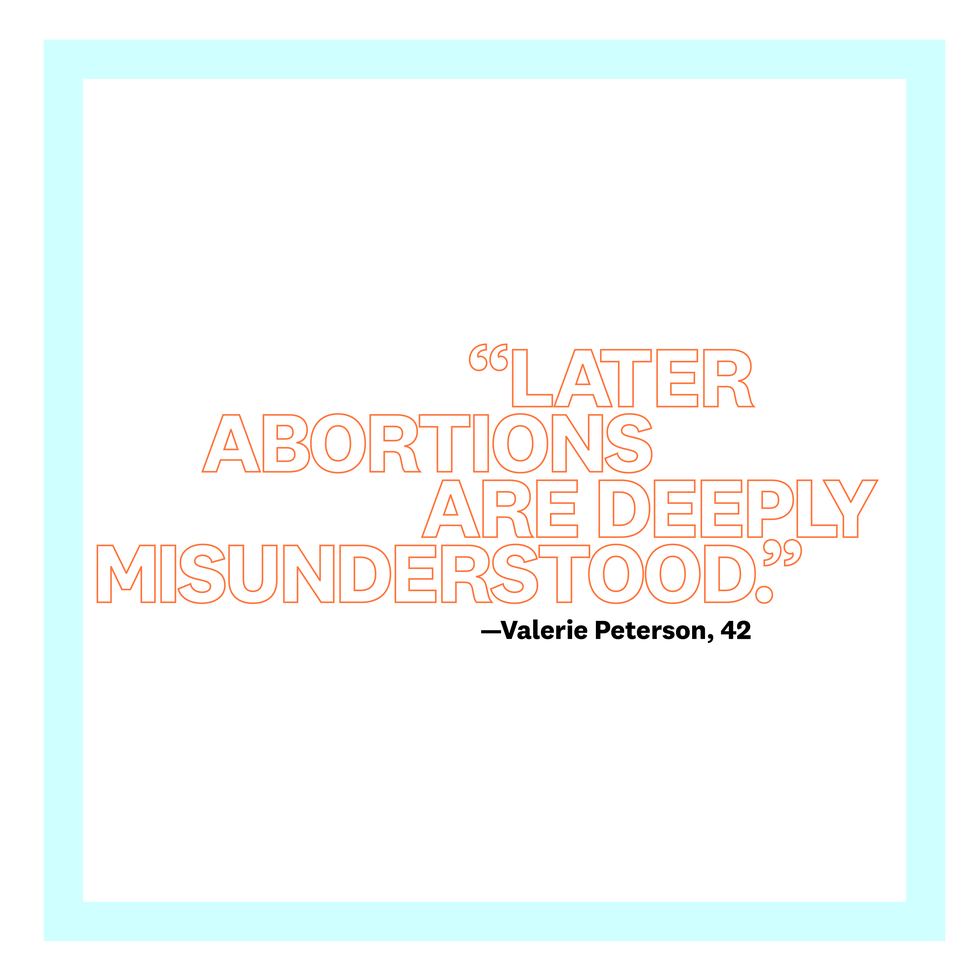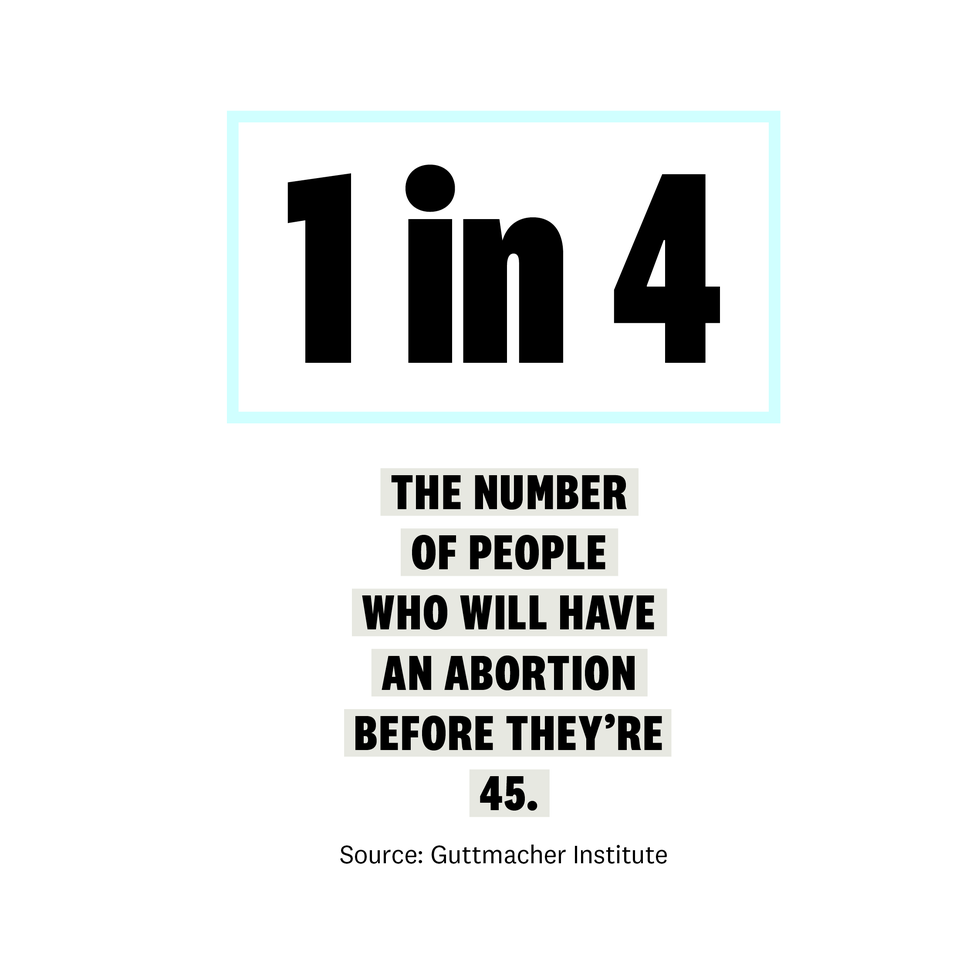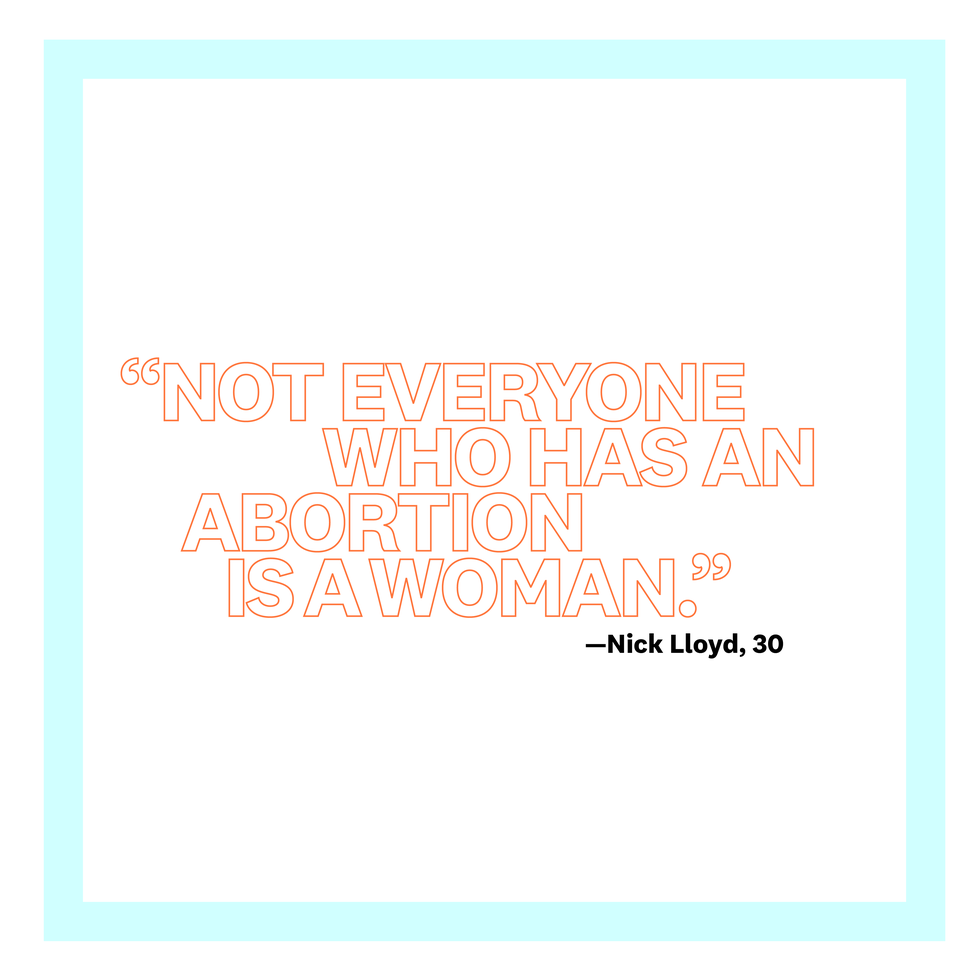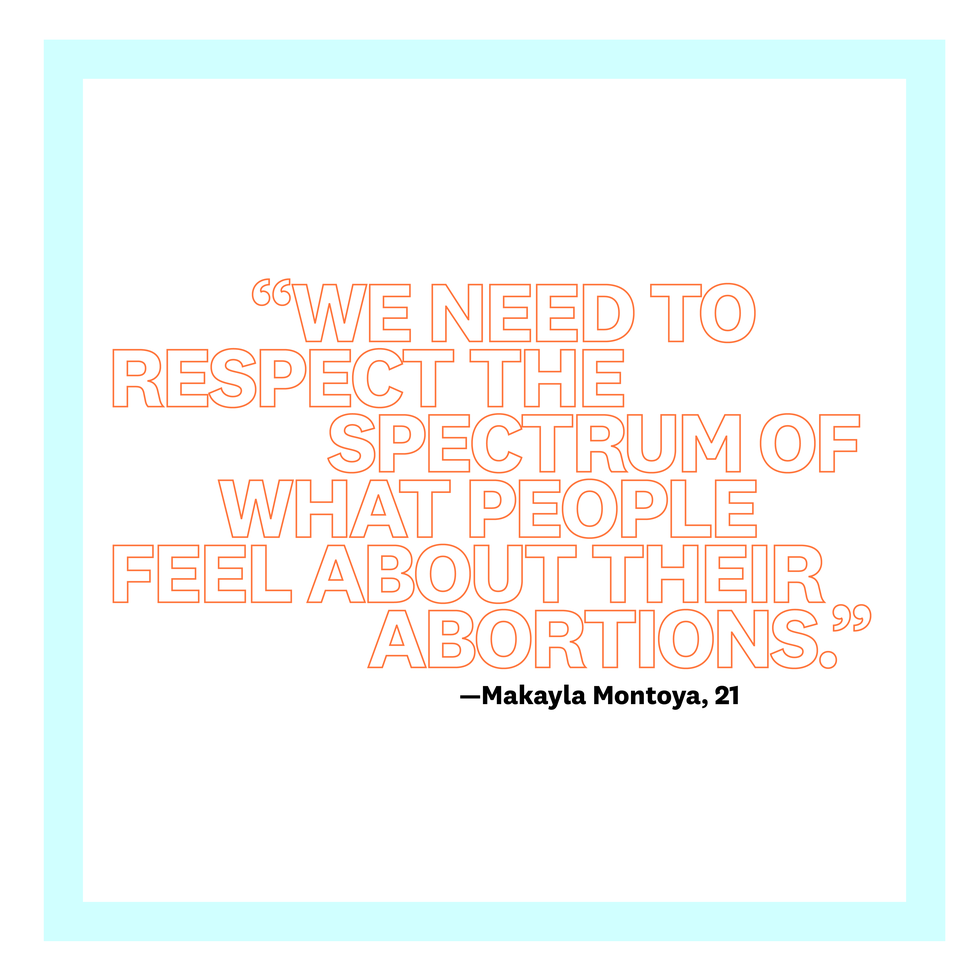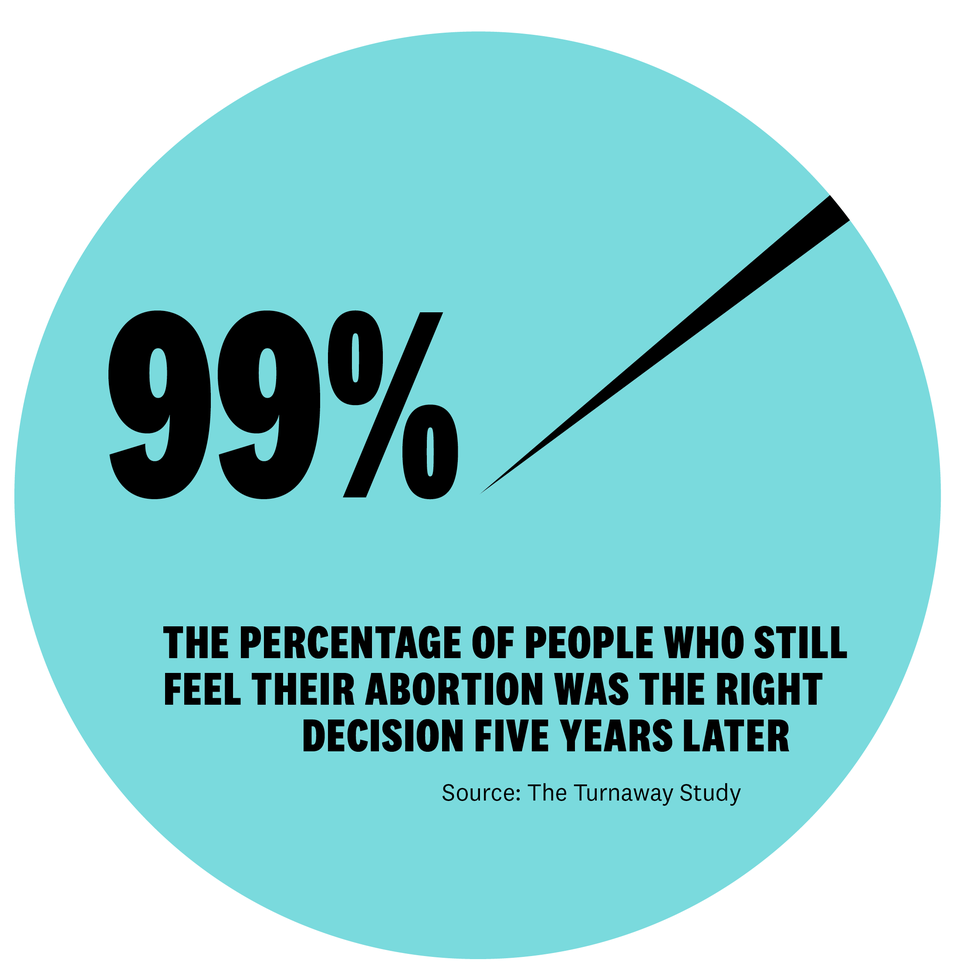When Larada Lee, 20, found out she was pregnant at the end of March 2020, her home state of Ohio had just gone into COVID-19 lockdown. Even though Lee had discovered she was pregnant early enough to have a medication abortion that in several states wouldn’t require an office visit, Ohio laws and a new statewide ban on telemedicine abortions made the process unnecessarily complicated and dangerous. She had to go into a clinic at the peak of the pandemic, when anxieties about spreading and catching COVID were higher than ever. “I was terrified to go into an office,” says Lee. “But at the time, Ohio legislators were pushing to close abortion clinics completely, so I felt like my opportunity could be taken away at any moment. I was frantic to get an appointment as soon as I could.”
As Lee looked into her options, she realized that if she couldn’t get into a nearby clinic fast, she’d have to drive two and a half hours to the next available one for the care she needed. Thankfully, she was able to get scheduled last-minute at a local facility, but had to have three appointments days apart (one for a mandatory consultation in which her providers were required by law to give her information to discourage her from having an abortion, one to receive medication, and one to follow-up). “I had to visit the clinic in-person each time, and I had to risk my health at the height of COVID to access safe medication that can easily be prescribed via telemedicine. It was inhumane and isolating.”
Unfortunately, the difficulty Lee had in accessing completely legal care is all too familiar for people who’ve had abortions. But despite the upsetting and dangerous barriers, she’s confident in her decision and feels positively about it and the future it’s afforded her. “Since my abortion, I made a cross-country move to California and got a job that I love, helping young people. If I hadn’t had my abortion, I wouldn’t have been able to take that leap of faith and pursue my dreams. I am certain of that,” says Lee. “That single decision, that I am so affirmed in and empowered by, allowed me to alter the course of my life! Abortions aren’t something to be ashamed of, and they shouldn’t be framed as a last resort only–abortion is a completely normal and healthy option for anyone. I wish people understood that everyone loves someone who has had an abortion, and the way we talk about abortion should reflect that.”
The freedom that Lee experienced as a result of her choice has historically been left out of the media portrayal of abortion, though it’s not rare at all. Unfortunately, the exclusion of these kinds of stories isn’t the only issue with the cultural conversation around abortion: Most of what we do hear about the procedure is actually just inaccurate. A few examples: Abortion isn’t uncommon. Nearly one in four people with a womb will have one before they’re 45, per the Guttmacher Institute, and that number may be even higher when you take into account unreported abortions. Secondly, abortion isn’t dangerous. In fact, it’s safer than childbirth, found a study in the journal Obstetrics & Gynecology. Abortions aren’t just for young women. While most of the TV shows and movies that depicted abortions last year featured white, childless teens seeking care, the majority of people who get abortions are already parents, per Guttmacher.
Another hugely important fact: Abortion is almost never regretted. Ninety-nine percent of people with unwanted pregnancies who are able to get an abortion still feel it was the right decision five years out, per the Turnaway Study, the largest study of experiences with abortion in the U.S. When looking back on the procedure, relief is the most common emotion people who have abortions feel over those five years, a study in Social Science & Medicine found. Those who have abortions also have no increase in their risk for mental health issues over time, and initially following the procedure, are less likely to experience anxiety and low self-esteem than those who are denied abortions. They also have six times higher odds of having positive one year plans and are more likely to achieve them, just like Lee.
Despite this evidence (and the fact that the majority of the country supports keeping abortion legal), more than 561 new abortion restrictions have been introduced across state legislatures in 2021. Of those, at least 83 have been enacted, putting 2021 on track to be the most damaging state legislative session for abortion in decades. And just this month, a Texas law went into effect that will ban abortions after six weeks of pregnancy—before many people even know they are pregnant—cutting off services to millions of people in the state. This is now the most restrictive abortion legislation in the country, denying care to an estimated 85 percent of patients seeking abortion in Texas—and deputizing citizens to sue anyone who helps someone get an abortion, like doctors and ride-share drivers. Eight other U.S. states have enacted similar six-week bans, too. Thankfully, those have been blocked by courts, but the presence of these bills still creates even more obstacles, fear and danger around accessing care and increases stigma.
“Not only is abortion a standard part of health care, like any procedure you’d go to your gynecologist for, but considering it’s something that a quarter of women will have, it’s also essential health care,” says Alexis McGill Johnson, president and CEO of Planned Parenthood. “We need to normalize abortion as the safe, common experience that it is.”
It’s almost a certainty that you or someone you care about will need abortion care at some point in their life, and the silence surrounding it doesn’t help anyone make informed decisions about their reproductive health. And with laws around access constantly changing, and the pandemic impacting how people receive care, it’s more important than ever to have a comprehensive understanding of what abortion is like in our country today, and the options available.
So how do you navigate this complex topic? Familiarize yourself with these misunderstood truths about abortion, get clear on what the best care out there looks like and the biggest hurdles to access, and listen to people who’ve experienced it. Start here.
All kinds of people have abortions for all kinds of reasons.
When you picture an abortion patient, you’re likely to imagine a high schooler, secretly saving up money and asking her friend or boyfriend for a ride to the clinic, a la Fast Times at Ridgemont High or more recently, Unpregnant. But, while young women do have abortions, that’s not what the typical patient or abortion story looks like. (Fact: The majority of people who have abortions are in their 20s and already have children!)
Reasons for having an abortion vary, but most people cite that they’re not ready for another child or can’t financially support one. Sixty-five percent of abortions occur in the first eight weeks of gestation, and only 1.4 percent occur at or after 21 weeks, according to the Centers for Disease Control and Prevention (CDC). Even though they’re uncommon, there’s heightened stigma surrounding abortions that occur later in pregnancy, despite the fact that many of them happen because barriers to abortion access have pushed the pregnant person further into gestation before they can have the procedure (fetal anomalies that make the pregnancy incompatible with life or put the pregnant person’s health in danger are other causes).
It’s unhelpful to judge when or why an abortion occurs, says Meera Shah, MD, chief medical officer for Planned Parenthood Hudson Peconic, and author of You’re The Only One I’ve Told: The Stories Behind Abortion, because each situation is so unique and one abortion can’t be compared to another. Dr. Shah shares a story of a patient who had chronic medical conditions that made her unable to tell that she was pregnant until later into gestation, who needed an abortion. “She was ill and disabled and said the pregnancy would destroy her life. I didn’t question that assessment and decision,” she says. “As her doctor, I only know a fraction of her life, and I trust that she can make the best choice for her circumstances.”
State abortion restrictions harm communities of color the most.
Depending on who you are and where you live, abortion services can be relatively easy or incredibly difficult to access. “Abortion isn’t available to everyone in every ZIP code,” says Johnson, whether due to a lack of clinics (there are six states that only have one) or state laws that ban abortions after certain dates or force patients to jump through hoops to receive care, like requiring they pay for additional services, wait 24 hours after an initial appointment to have the procedure, or receive prior counseling about unfounded psychological effects of abortions.
There’s no clear pattern linking abortion restrictions to abortion rates, but they may lead to unsafe or delayed abortions. “Sometimes people have to go to extraordinary means to access what is a legal and safe procedure in our country,” Johnson says. "In the early days of the pandemic, when several state governments forced the closure of abortion clinics, inquiries about self-managed abortions increased, and states that still offered services saw a major increase in patients.” In the three weeks after Governor Greg Abbott issued an executive order pausing abortion services in Texas during the pandemic, Planned Parenthood clinics in Colorado, New Mexico and Nevada saw a 706-percent increase in patients from Texas, compared to the month before.
Because the majority of those who have abortions are people of color, these laws effect them the most. In particular, data shows that abortion restrictions disproportionately affect people of color in rural communities with little income, who may have more difficulty taking off time from work or securing childcare to get an abortion far from home. People of color are also more likely to face financial consequences and live below the Federal Poverty Line after being denied an abortion. (If you’re interested in supporting efforts to protect and increase abortion access, Black Women’s Health Imperative, National Asian Pacific American Women’s Forum, National Latina Institute For Reproductive Justice, Sister Song, and Unite for Reproductive & Gender Equity are organizations that center the needs of people of color.)
Abortion stigma itself actually harms your health.
People who live in communities that strongly oppose abortion are more likely to suffer negative mental health effects from it, even though they personally feel confident they made the right decision for them, per the Turnaway Study. And the more stigma a patient felt when they got their abortion, the more psychological distress they had as a result five years out. “This speaks to the negative power of shame surrounding abortion,” says Dr. Shah. “We need to normalize abortion as a common part of people’s reproductive lifespan, like miscarriage, infertility, and adoption.”
Unfortunately, stigma can come from even well-meaning people and self-described supporters of abortion, too (say, a friend who says, “I’m pro-choice but I’d never get an abortion”). Stigma exists in the medical community, too, especially against people who have had multiple abortions or are nearing the end of their reproductive years, adds Dr. Shah. “I had a patient, who was 41, come to me crying, telling me another doctor had told her she should continue the pregnancy because this could be her last chance. Not once did her doctor ask her how she felt about it,” says Dr. Shah.
For a lot of patients, their doctor is the only person they feel they can talk to about their abortion, so that conversation can have a deep and lasting impact on the patient’s perception of it, says Dr. Shah. “I tell people it’s really common and that they’re not alone and their shoulders always drop in relief. I used to be afraid to tell people I was an abortion provider, but once I started slowly coming out about it, I was met with a lot of compassion. Sometimes we hide because we think we’re the only ones, but the reality is that everyone has an experience with abortion.”
You can now get abortion pills safely in the mail.
Not everyone has an abortion in a clinic; some choose to have a medication abortion (available to people who are up to 10 weeks pregnant) at home. Medication abortion involves taking the pills mifepristone (to stop a pregnancy from growing), and then misoprostol (to cause cramping that empties the uterus).
In the past, you had to get these pills from your doctor in an office. But since April 2021, when the Biden administration temporarily lifted the FDA requirement that the first of the two abortion pills must be administered in a doctor’s office, in certain states, there’s no longer a need to visit a doctor (or even a pharmacy) to get these pills.
Enter Abortion-On-Demand (AOD), the first large-scale teleabortion provider in the U.S., which can help people get abortion pills in the mail. When patients visit abortionondemand.org, they can fill out a questionnaire, have a video consult with a doctor, then have pills shipped to them overnight. This means safe, at-home medication abortions will be much more accessible—a total gamechanger for people who live far from a provider or may have difficulty securing time off from work, travel, and childcare to get to a facility. These pills are also cheaper—the service is $239, about $300 less than a typical medication abortion involving a clinic visit. More good news? Sixty percent of all profits from the service will go to the Abortion Care Network (ACN), an organization that supports independent, in-person clinics. While teleabortion access means fewer people will need to visit clinics, AOD founder, Jamie Phifer, MD, didn’t want the service to lead to the shutdown of clinics that people who need later abortions depend on.
Currently, AOD is available in 20 states, with plans to expand to seven more states soon. “Making medication abortion easier to access is critical to advancing health equity and ensuring all people can access time-sensitive abortion care,” says Johnson. While this access is still a temporary measure, Johnson hopes the FDA will conduct a review of the full set of restrictions on mifepristone “to ensure all patients can access medication abortion without an in-person visit—during the pandemic and beyond.”
For those who don't live in a state with AOD and who can't have an in-clinic abortion because it’s inaccessible for distance and/or monetary reasons—or because having an abortion openly could put them in danger of abusive people around them—there are still options available. In these cases, some people perform what’s known as a self-managed abortion.
Basically, self-managed abortions work the same as having a medication abortion at home, but you’re acquiring the pills without a prescription or consultation with a doctor before taking them. While this method can be safe when patients are armed with proper information, says Dr. Gabriela Aguilar, MD, an ob-gyn and fellow and clinical instructor of family planning at Yale School of Medicine, there are potential health risks (you don’t have a doctor you can turn to for guidance if something goes wrong) as well as legal ramifications to self-managed abortions.
You can learn about self-managed abortion options at aidaccess.org, as well as plancpills.org, which outlines how people facilitate safe, self-managed abortions in different locations where laws vary, says Dr. Aguilar. You can also take advantage of a chatbot called Ally on WhatsApp (833-221-ALLY) to answer your medical abortion questions in real time. It was launched in April by Women First Digital (WFD), a collection of online platforms that provides information and counseling services on safe abortion, contraception, and sexual and reproductive health, with the goal of being the world’s first abortion virtual assistant.
It’s not always simple to find an abortion-friendly provider.
For those seeking an abortion, finding an affirming provider and welcoming, safe clinic can be unnecessarily complicated. There are facilities known as crisis pregnancy centers and pregnancy resource centers that masquerade as abortion facilities but actually try to persuade patients from having abortions. They’re often run by people who aren’t health care professionals, and they typically advertise free pregnancy tests, baby formula and clothes, diapers, and prenatal care services, aimed at bringing in low-income and under-resourced patients, says Dr. Aguilar. Take these steps to ensure the clinic you’re going to can provide the care you need, as well as a positive experience.
Your positive provider checklist
Help is available for any hurdle you’re facing
There are resources that offer assistance—financial, logistical, or emotional—no matter your circumstance. The answer to common obstacles, ahead.



